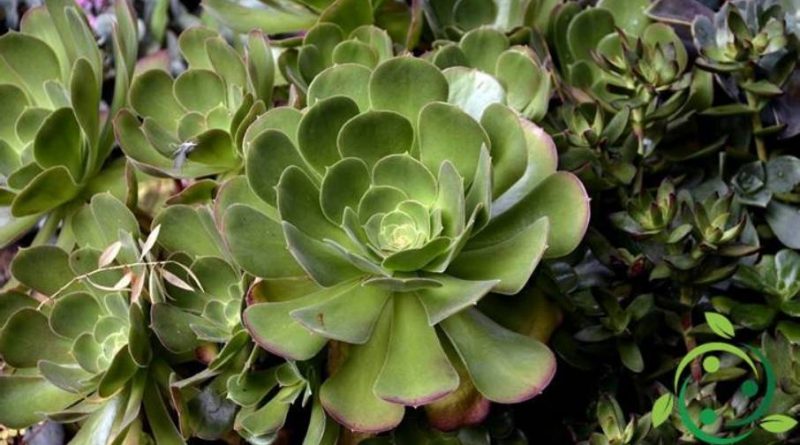How to grow Aeonium
How to grow Aeonium
Aeonium is a genus of moderately rustic succulent plants of the Crassulaceae family; these are species originating from the Canary Islands and Africa but which in fact have become naturalized above all in the coastal areas of many parts of southern Italy.
In this card we will see how to cultivate Aeonium following the most appropriate precautions for the good growth of these plants.
Among the main cultivated species we recall:
– Aeonium arboreum – its branched stem can reach up to one meter in height, its long rosettes have spatulate green leaves and the flowers are long racemes (clusters) of yellow-gold color;
– Aeonium decorum or A. cooperii – has the form of a very branched bush with a rosette at the end of each branch with leaves that take on a bronze color in the sun, its flowers are white with pinkish streaks;
– Aeonium haworthii – it has the shape of a bush with woody branches that end with rosettes composed of green leaves that take on a reddish color at the top, its flowers are pale yellow;
– Aeonium tabulaeforme – a dwarf plant that has large rosettes with leaves that fit together. In nature it grows mainly in rocks, its flowers are yellow.
In general, for the cultivation of these plants it is necessary to prepare a very draining substratum or soil composed of fertilized earth and sand.
This light substrate with high draining capacity can be fertilized from February to May, in correspondence with flowering; if cultivated in a pot, a suitable fertilizer can be diluted in water and irrigated with this solution every two weeks; if, on the other hand, the cultivation is done in the open ground, it is advisable to add well-humidised organic matter, such as manure or earthworm humus, every spring, at the end of the winter.
They are plants that also love sunny areas that allow a compact growth and a good coloring of the leaves that are grouped together in the form of a rosette.
The direct sun in fact positively influences also the coloring of the leaves, exalting the effect of the pink or violet pigments. They can be grown both in pots and outdoors. If they are planted outdoors, directly in the ground, you need to choose an area where excess water, coming from irrigation but also from meteoric events, can drain immediately. Irrigations must however be carried out every 10-15 days, but only when the soil is perfectly dry.
Although the Aeoniums are plants originating from warm climates, they also endure periods of cold temperatures as long as they never fall below 0 °. When they are grown in the ground it is good to prepare, especially in colder climates and in case of mulch frosts, possibly of vegetable nature (leaves or straws).
For plants grown in pots remember to repot if necessary in slightly larger pots than the previous one, to give way to the plant to grow in height and width.
As for the propagation we remind that the Aeonium, like many other Crassulaceae, multiply through cuttings.
To do this you can start from the apical rosette or from a single leaf, paying attention to detach it keeping all its base. The cut part can be left to root only when dry. The cutting is advisable especially in the case of shrubs that begin to be too woody and messy.
The optimal periods for this intervention are spring and autumn are.
Propagation by seed is also possible; in this case care must be taken to keep the soil moist for the entire first year of the plant’s life.
From the sanitary point of view they are very resistant plants as long as they do not end up in rottenness due to a bad drainage of the substratum or to excesses of irrigation.

